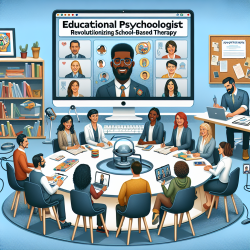Unlocking the Path to STEMM Success: Insights for Practitioners
As a practitioner in the field of speech-language pathology, understanding the dynamics of career choices in STEMM (Science, Technology, Engineering, Mathematics, and Medicine) can significantly enhance your approach to fostering children's educational and career outcomes. A recent study published in the International Journal of STEM Education sheds light on how personal, behavioral, and environmental factors influence career paths into STEMM versus non-STEMM middle-skill careers.
Key Findings from the Research
The study utilized data from the National Educational Longitudinal Study of 1988 to explore the predictors of career choices in STEMM versus non-STEMM fields. Here are some critical insights:
- Science Literacy Matters: Higher science knowledge consistently predicts entry into both high-skill and middle-skill STEMM careers. This underscores the importance of enhancing science literacy from an early age.
- Mathematics Aptitude: Advanced math course-taking increases the likelihood of pursuing a STEMM career, highlighting the need for strong math foundations.
- Gender Differences: Men are more likely than women to pursue STEMM careers at all skill levels, indicating a need for targeted interventions to attract and retain women in these fields.
- Underrepresented Minorities: While traditionally underrepresented minorities are less prevalent in high-skill STEMM careers, they are overrepresented in middle-skill STEMM roles compared to non-STEMM fields.
Implications for Practitioners
Understanding these dynamics can help practitioners tailor their educational strategies to better support children in pursuing STEMM careers. Here are some actionable insights:
- Enhance Science and Math Education: Encourage early exposure to advanced science and math courses to build a strong foundation for future STEMM success.
- Address Gender Disparities: Develop programs that make STEMM fields more attractive to young girls, such as hands-on science activities and female role models in STEMM.
- Support Underrepresented Minorities: Create pathways that encourage higher educational attainment among minority groups, focusing on middle-skill opportunities as stepping stones.
Encouraging Further Research
While this study provides valuable insights, it also highlights the need for further research to explore the nuances of STEMM career choices. Practitioners are encouraged to delve deeper into these findings and consider conducting their own studies to enhance their understanding and impact.
To read the original research paper, please follow this link: How personal, behavioral, and environmental factors predict working in STEMM vs non-STEMM middle-skill careers.










